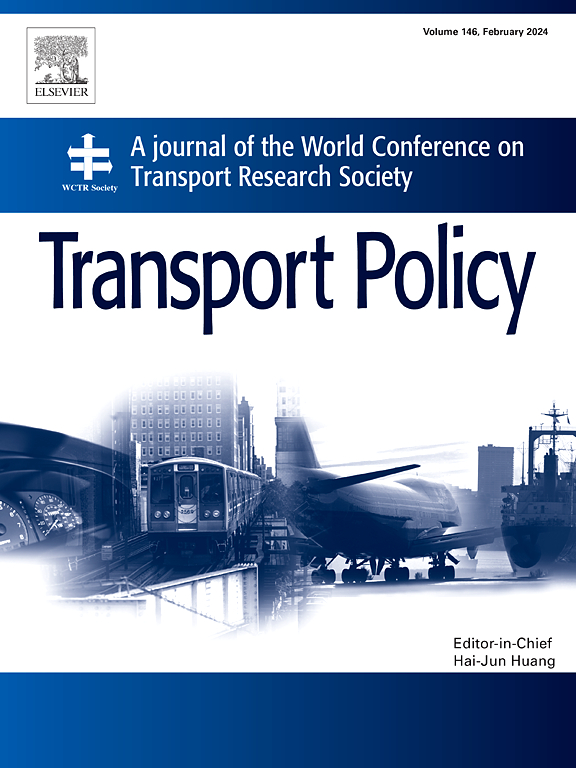Projecting AV sales in the EU-27 and UK: Insights from Euro emission standards and historical trends
IF 6.3
2区 工程技术
Q1 ECONOMICS
引用次数: 0
Abstract
The adoption of Autonomous Vehicles (AVs) stands as a substantial area of study within the existing literature, explored through various approaches like sales estimation, expert insights, and historical technology adoption patterns. However, most studies have focused on specific countries or individual aspects of AV adoption (e.g., user acceptance, safety, societal impacts), without integrating the interplay between regulatory standards, technological advancements, and historical sales data, leaving a significant gap in understanding the long-term adoption patterns across the entire EU-27 and the UK. In this research, we address this gap by employing a combined approach that utilizes sales estimation and historical adoption patterns of car-related technologies to produce a sequential, long-term prediction of AV adoption across the EU-27 and the UK. This combination is facilitated through examining new vehicle registrations that adhere to European vehicle emission standards between 2001 and 2020, using data from the International Council on Clean Transportation (ICCT). The objective is to develop two robust unified predictive models, the first derivative Logistic model and the Gaussian model, explaining historical sales trends and forecasting future vehicle registrations, incorporating Euro 7 features, vehicle electrification, and autonomous driving features. We find that both generated models demonstrate a reasonable to excellent fit with the historical trends and predict the advent of AVs in the market, with the Gaussian model predicting an earlier peak in AV registrations (in 2042) compared to the first derivative Logistic model (in 2044). Furthermore, the Gaussian model projects significantly higher start year sales for AVs (8.6 million new registrations) than the other model's much lower estimation (below 2.5 million new registrations). This research represents the first study to investigate the long-term adoption of AVs across the entire EU-27 and the UK, providing a novel forecasting approach that integrates multiple technological advancements and regulatory influences.
求助全文
约1分钟内获得全文
求助全文
来源期刊

Transport Policy
Multiple-
CiteScore
12.10
自引率
10.30%
发文量
282
期刊介绍:
Transport Policy is an international journal aimed at bridging the gap between theory and practice in transport. Its subject areas reflect the concerns of policymakers in government, industry, voluntary organisations and the public at large, providing independent, original and rigorous analysis to understand how policy decisions have been taken, monitor their effects, and suggest how they may be improved. The journal treats the transport sector comprehensively, and in the context of other sectors including energy, housing, industry and planning. All modes are covered: land, sea and air; road and rail; public and private; motorised and non-motorised; passenger and freight.
 求助内容:
求助内容: 应助结果提醒方式:
应助结果提醒方式:


